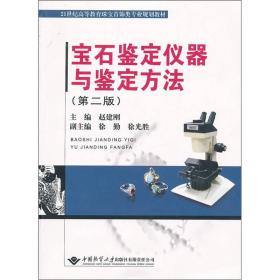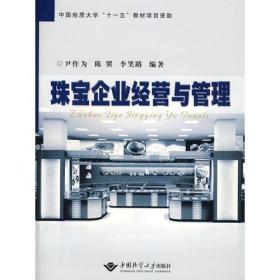
战略管理:概念与案例(英文版·原书第21版)
¥ 24.31 2.5折 ¥ 99 九品
仅1件
北京东城
认证卖家担保交易快速发货售后保障
作者[美]小阿瑟·A.汤普森(Arthur、A.、Thompon、Jr. 著
出版社机械工业出版社
出版时间2020-05
版次1
装帧平装
货号A3
上书时间2024-11-19
- 最新上架
商品详情
- 品相描述:九品
图书标准信息
- 作者 [美]小阿瑟·A.汤普森(Arthur、A.、Thompon、Jr. 著
- 出版社 机械工业出版社
- 出版时间 2020-05
- 版次 1
- ISBN 9787111653820
- 定价 99.00元
- 装帧 平装
- 开本 16开
- 纸张 胶版纸
- 页数 548页
- 【内容简介】
-
本书全面涵盖了战略管理课程的教学内容,加入了作者*新的研究成果,更换了全部的“开篇案例”和“战略聚焦”专栏,极力贴近管理实践的*新动态;囊括了大量企业案例,揭示了企业在当今市场环境中应如何有效地进行战略管理。本书详细介绍了如何运用战略管理的工具和技术,实践性强,向读者展示了战略管理的全貌。
本书适用于管理类专业本科生、硕士生、MBA、EMBA,也可以作为企业管理人员和相关学者的参考书。 - 【目录】
-
目 录
出版说明
前 言
第一部分 战略制定和执行的
概念与技术
第1章 战略的内涵与重要性2
学习目标2
11 战略的内涵3
12 公司战略与商业模式9
13 制胜战略的制定12
14 战略制定与战略实施的重要性13
15 展望14
本章要点14
巩固练习15
模拟练习15
尾注16
第2章 确定公司方向:愿景、
使命、目标与战略18
学习目标18
21 战略制定和战略实施的内容19
22 阶段1:制定战略愿景、使命陈述和核心价值观20
23 阶段2:设定目标26
24 阶段3:制定战略31
25 阶段4:执行战略36
26 阶段5:评估绩效并进行校正调整37
27 公司治理:董事会在战略制定和执行中的作用37
本章要点41
巩固练习42
模拟练习43
尾注44
第3章 企业外部环境评估46
学习目标46
31 公司宏观环境中具有战略意义的要素47
32 评估公司所处的行业和竞争环境49
33 五力模型50
34 互补者与价值网络66
35 驱动变化的力量与产业动态67
36 战略集群分析71
37 竞争对手分析74
38 关键成功因素75
39 产业的盈利前景76
本章要点77
巩固练习79
模拟练习79
尾注80
第4章 公司资源、能力和竞争力评估82
学习目标82
41 公司目前战略的运作效果评估83
42 公司最重要的资源、能力与持久竞争优势87
43 公司的优势与劣势分析94
44 成本结构、客户价值主张与公司的价值链活动99
45 公司竞争态势评估109
46 确定值得管理层关注的战略性问题112
本章要点112
巩固练习114
模拟练习117
尾注118
第5章 五种通用竞争战略120
学习目标120
51 通用竞争战略的类型121
52 低成本战略122
53 广泛差异化战略129
54 聚焦(或利基市场)战略136
55 最优成本战略140
56 五种通用竞争战略的特征比较143
本章要点145
巩固练习146
模拟练习147
尾注147
第6章 强化公司的竞争地位:战略行动、时机和经营范围148
学习目标148
61 进攻战略:提升公司的市场地位149
62 防御战略:捍卫市场地位和竞争优势153
63 战略行动的时机选择155
64 通过界定经营范围强化公司的市场地位158
65 横向并购战略159
66 纵向一体化战略162
67 外包战略:缩小经营范围167
68 战略联盟与伙伴关系169
本章要点174
巩固练习176
模拟练习177
尾注177
第7章 国际市场竞争战略178
学习目标178
71 公司决定进入国际市场的原因179
72 跨国竞争使战略制定更为复杂的原因181
73 进入国际市场的战略选择188
74 国际化战略:三种主要的方法193
75 国际经营与寻求竞争优势199
76 跨国战略举措202
77 在发展中国家市场竞争的战略204
78 防御全球巨人:发展中国家的本土公司战略206
本章要点209
巩固练习210
模拟练习211
尾注212
第8章 公司战略:多元化与多业务公司214
学习目标214
81 多元化战略的任务215
82 多元化的时机选择216
83 创造股东价值:多元化的终极理由217
84 业务多元化的途径218
85 多元化路径选择:相关多元化与非相关多元化221
86 相关多元化221
87 非相关多元化228
88 相关-非相关多元化战略组合234
89 多元化公司的战略评估235
本章要点252
巩固练习254
模拟练习256
尾注256
第9章 伦理、企业社会责任、环境可持续性和战略258
学习目标258
91 商业伦理的内涵259
92 伦理标准的资料来源:普适还是相对260
93 伦理标准影响战略制定和实施的方式及原因265
94 不道德的企业战略和行为的驱动因素266
95 公司战略应合乎道德的原因269
96 战略、企业社会责任和环境可持续性272
本章要点285
巩固练习286
模拟练习287
尾注287
第10章 构建具有良好战略执行力的组织:人员、能力和结构290
学习目标290
101 战略执行框架292
102 构建具有良好战略执行力的组织:三个关键活动295
103 配备组织人员296
104 获取、开发和强化核心资源和能力300
105 构建与战略匹配的组织结构305
本章要点316
巩固练习318
模拟练习319
尾注319
第11章 管理内部运营:采取行动促进战略执行320
学习目标320
111 资源配置321
112 制定政策和程序323
113 使用最佳实践和过程管理工具325
114 构建信息和操作系统332
115 使用激励机制促进战略良好执行334
本章要点341
巩固练习342
模拟练习343
尾注343
第12章 企业文化和领导力:良好战略执行的关键346
学习目标346
121 灌输有利于战略执行的企业文化347
122 领导战略的执行过程362
123 引领战略制定和执行的总结367
本章要点367
巩固练习369
模拟练习369
尾注370
第二部分 战略制定和执行的案例
案例1 爱彼迎2016:共享经济的商业模式C-2
案例2 亚马逊的商业模式及其演变C-6
案例3 好市多公司2016:使命、商业模式以及战略C-22
案例4 汤姆斯鞋业2016:致力于社会责任C-43
案例5 Fitbit公司的战略已经适应不了其发展C-52
案例6 GoPro在2016年的生存斗争C-59
案例7 南非葡萄酒产业在2016年该何去何从C-73
案例8 LVMH集团2016:在奢侈品领域多元化经营C-85
案例9 西南航空公司2016:文化、价值观和运营实践C-101
案例10 蒂姆·库克的管理之道:缔造苹果公司下一个传奇C-136
Contents
PART 1 Concepts and Techniques for Crafting and Executing Strategy 1
Section A: Introduction and Overview
1 What Is Strategy and Why Is It Important? 2
WHAT DO WE MEAN BY STRATEGY? 3
Strategy Is about Competing Differently 4
Strategy and the Quest for Competitive Advantage 4
Why a Company’s Strategy Evolves over Time 8
A Company’s Strategy Is Partly Proactive and Partly Reactive 8
A COMPANY’S STRATEGY AND ITS BUSINESS MODEL 9
WHAT MAKES A STRATEGY A WINNER? 12
WHY CRAFTING AND EXECUTING STRATEGY ARE IMPORTANT TASKS 13
Good Strategy + Good Strategy Execution = Good Management 13
THE ROAD AHEAD 14
ILLUSTRATION CAPSULES
11 Starbucks’s Strategy in the Coffeehouse Market 6
12 Pandora, SiriusXM, and Over-the-Air Broadcast Radio: Three Contrasting Business Models 11
2 Charting a Company’s Direction: Its Vision, Mission, Objectives, and Strategy 18
WHAT DOES THE STRATEGY-MAKING, STRATEGY-EXECUTING PROCESS ENTAIL? 19
STAGE 1: DEVELOPING A STRATEGIC VISION, MISSION STATEMENT, AND SET OF CORE VALUES 20
Developing a Strategic Vision 21
Communicating the Strategic Vision 21
Developing a Company Mission Statement 24
Linking the Vision and Mission with Company Values 25
STAGE 2: SETTING OBJECTIVES 26
The Imperative of Setting Stretch Objectives 26
What Kinds of Objectives to Set 28
The Need for a Balanced Approach to Objective Setting 28
Setting Objectives for Every Organizational Level 30
STAGE 3: CRAFTING A STRATEGY 31
Strategy Making Involves Managers at All Organizational Levels 31
A Company’s Strategy-Making Hierarchy 32
Uniting the Strategy-Making Hierarchy 35
A Strategic Vision + Mission + Objectives + Strategy =A Strategic Plan 35
STAGE 4: EXECUTING THE STRATEGY 36
STAGE 5: EVALUATING PERFORMANCE AND INITIATING CORRECTIVE ADJUSTMENTS 37
CORPORATE GOVERNANCE: THE ROLE OF THE BOARD OF DIRECTORS IN THE STRATEGY-CRAFTING, STRATEGY-EXECUTING PROCESS 37
ILLUSTRATION CAPSULES
21 Examples of Strategic Visions―How Well Do They Measure Up? 23
22 Patagonia, Inc: A Values-Driven Company 27
23 Examples of Company Objectives 30
24 Corporate Governance Failures at Volkswagen 40
Section B: Core Concepts and Analytical Tools
3 Evaluating a Company’s External Environment 46
THE STRATEGICALLY RELEVANT FACTORS IN THE COMPANY’S MACRO-ENVIRONMENT 47
ASSESSING THE COMPANY’S INDUSTRY AND COMPETITIVE ENVIRONMENT 49
THE FIVE FORCES FRAMEWORK 50
Competitive Pressures Created by the Rivalry among Competing Sellers 52
The Choice of Competitive Weapons 54
Competitive Pressures Associated with the Threat of New Entrants 54
Competitive Pressures from the Sellers of Substitute Products 58
Competitive Pressures Stemming from Supplier Bargaining Power 60
Competitive Pressures Stemming from Buyer Bargaining Power and Price Sensitivity 62
Is the Collective Strength of the Five Competitive Forces Conducive to Good Profitability? 65
Matching Company Strategy to Competitive Conditions 65
COMPLEMENTORS AND THE VALUE NET 66
INDUSTRY DYNAMICS AND THE FORCES DRIVING CHANGE 67
Identifying the Forces Driving Industry Change 67
Assessing the Impact of the Forces Driving Industry Change 70
Adjusting the Strategy to Prepare for the Impacts ofDriving Forces 70
STRATEGIC GROUP ANALYSIS 71
Using Strategic Group Maps to Assess the Market Positions of Key Competitors 71
The Value of Strategic Group Maps 73
COMPETITOR ANALYSIS 74
KEY SUCCESS FACTORS 75
THE INDUSTRY OUTLOOK FOR PROFITABILITY 76
ILLUSTRATION CAPSULES
31 Comparative Market Positions ofSelected Companies in the Casual Dining Industry: AStrategic Group Map Example 72
4 Evaluating a Company’s Resources, Capabilities, and Competitiveness 82
QUESTION 1: HOW WELL IS THE COMPANY’S PRESENT STRATEGY WORKING? 83
QUESTION 2: WHAT ARE THE COMPANY’S MOST IMPORTANT RESOURCES AND CAPABILITIES, AND WILL THEY GIVE THE COMPANY A LASTING COMPETITIVE ADVANTAGE OVER RIVAL COMPANI
点击展开
点击收起
— 没有更多了 —












以下为对购买帮助不大的评价